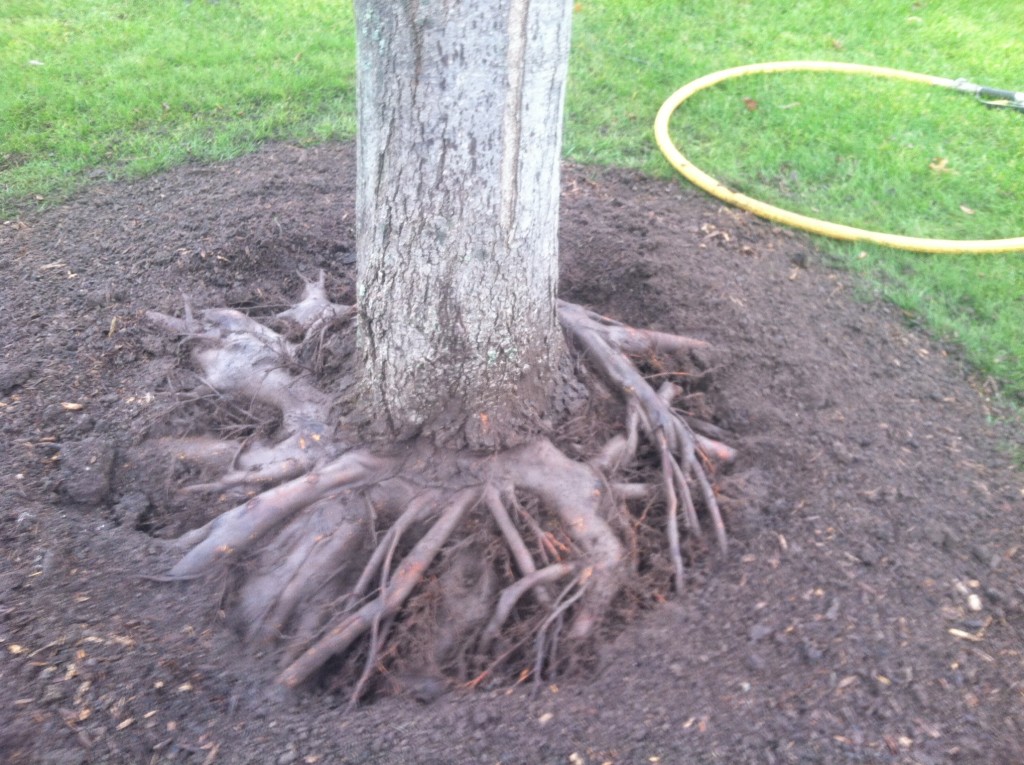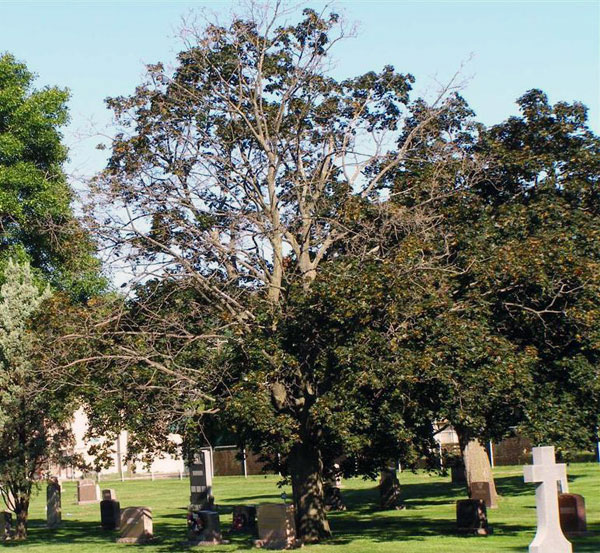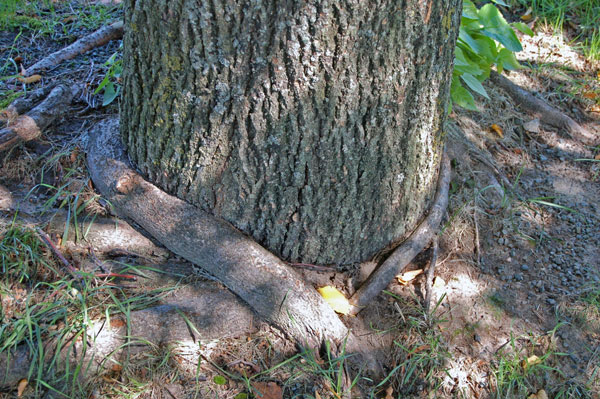Root Girdling



Root girdling is a very common problem in many kinds of trees. Some trees deal with this stress better than others but this always has a negative affect on a tree. As you will see in the picture to the right this ash tree has roots choking its trunk nearly all the way around. Most other roots extending around the tree work in a circular type fashion. Well this is an obvious case of girdling and most people would have no problem spotting this issue. What do you look for when it isn't so obvious?
Tree taper is often a great indicator of tree girdling. If you look back at the picture again check out the base of the tree. It is almost the exact same diameter as the rest of the trunk. What does that mean exactly to you though? It means that the roots under the ground are not properly extending out from the tree. Something is impeding their growth in a linear path extending from the trunk.
Now contrary to belief trees tend not to grow through things but instead the grow around them. In clay soil maple trees have a hard time expanding. The roots become bound in a circle and never expand past the original hole they were dug in. This causes many problems for the tree. Essential water and nutrients are taken up in similar doses to when they were small trees. Over time a tree will not be able to handle the nutrient loss and it will decline.
The picture to the right shows a sugar maple in serious decline from girdling. Once trees get to 8" plus diameter then girdling issues start to show up. The lead branch starts to show dieback and nutrients are no longer able to travel to the tops of the tree. This process continues until the tree is no longer transporting nutrients back and forth and then tree failure is the outcome.
Root girdling is a very difficult issue to solve in trees. Many times a plan to remedy this will lead to the death of the tree anyway's. It is best practice to remove trees with girdling issues and plant back trees with ideal root structure for your soil type. Remedying soil or deep root feedings can also be done to try and loosen the soil density and increase pore space for roots to grow.